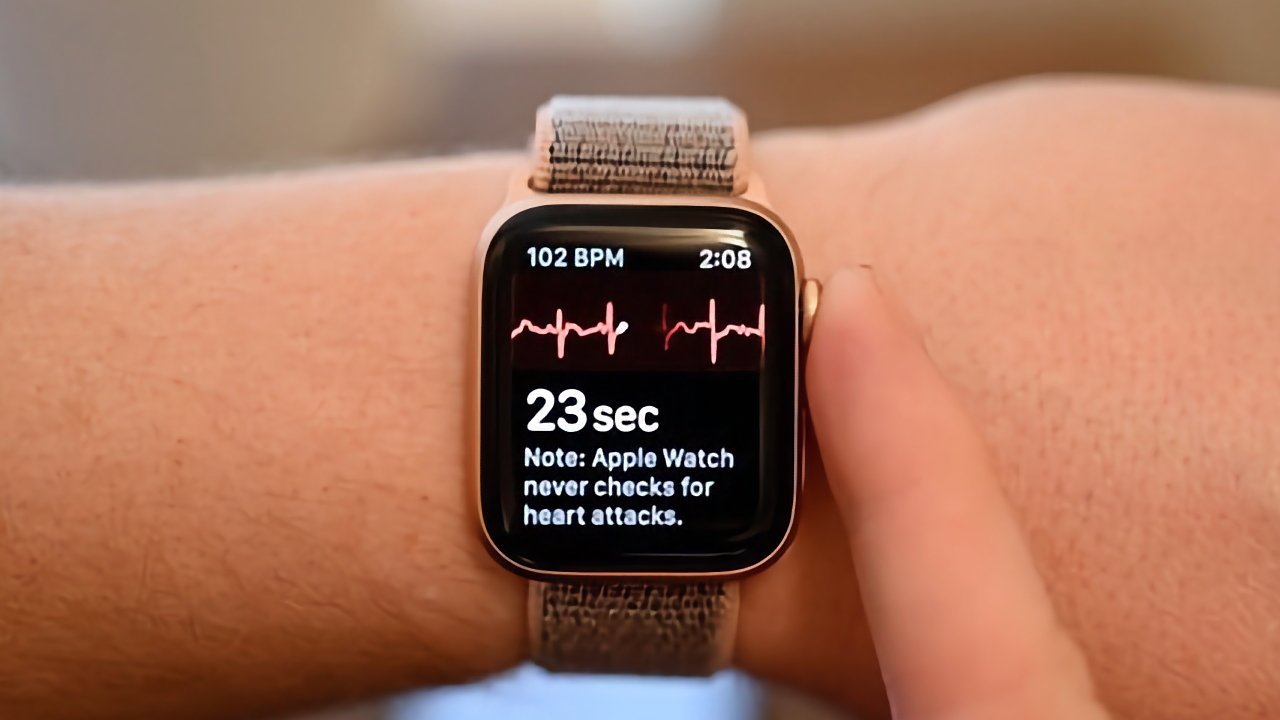Apple Watch helps diagnose something it wasn't designed to find
A Cleveland man has credited the Apple Watch with saving his life, after a series of different alerts drove him to get medical attention.

Apple Watch
In October, Ken Counihan was informed by his Apple Watch that his breathing was elevated. The wearable device advised that he had gone from an average of 14 breaths per minute to around 18 per minute.
"My wife had me make a phone call to my son and he suggested I go to the outpatient care, get it looked at, which is what I did," Counihan told News 5 Cleveland. "And they did just an X-ray. And they gave me some meds for bronchitis at the time."
While he thought that was all, the Apple Watch raised a connected alert, which prompted further testing.
"My blood oxygen - which is normally mid-90s, which is what it is supposed to be, kind of 95 and up - started to get out to the mid-80s," he explained. The late-night alert didn't worry the man, but under the urging of his concerned family, he went to ER once again.
Using figures he had gathered from the Apple Watch, doctors ordered more scans and discovered blood clots in his lungs. His doctor advised that, had he not sought help, approximately 60% of people at that stage may not have survived the night.
Now on blood thinners, Counihan is happy and thankful that the Apple Watch pointed him in the right direction. While the Apple Watch cannot directly diagnose medical issues, it seems the various alerts and metrics it compiles about a user was enough to point doctors in the right direction.
"I've got friends that have gone out and bought an Apple Watch as a result," he told the report. "I just had dinner with a friend the other night and he's looking to get an Apple Watch now as well. It saved my life. It's amazing."
The Apple Watch has repeatedly been cited as a catalyst for life-saving assistance since its release. Earlier in March, it helped a British author discover an undiagnosed heart problem, while the Crash Detection feature helped medics reach a vehicle involved in a car crash in Germany, after it had been thrown 60 feet below the road.
Read on AppleInsider

Apple Watch
In October, Ken Counihan was informed by his Apple Watch that his breathing was elevated. The wearable device advised that he had gone from an average of 14 breaths per minute to around 18 per minute.
"My wife had me make a phone call to my son and he suggested I go to the outpatient care, get it looked at, which is what I did," Counihan told News 5 Cleveland. "And they did just an X-ray. And they gave me some meds for bronchitis at the time."
While he thought that was all, the Apple Watch raised a connected alert, which prompted further testing.
"My blood oxygen - which is normally mid-90s, which is what it is supposed to be, kind of 95 and up - started to get out to the mid-80s," he explained. The late-night alert didn't worry the man, but under the urging of his concerned family, he went to ER once again.
Using figures he had gathered from the Apple Watch, doctors ordered more scans and discovered blood clots in his lungs. His doctor advised that, had he not sought help, approximately 60% of people at that stage may not have survived the night.
Now on blood thinners, Counihan is happy and thankful that the Apple Watch pointed him in the right direction. While the Apple Watch cannot directly diagnose medical issues, it seems the various alerts and metrics it compiles about a user was enough to point doctors in the right direction.
"I've got friends that have gone out and bought an Apple Watch as a result," he told the report. "I just had dinner with a friend the other night and he's looking to get an Apple Watch now as well. It saved my life. It's amazing."
The Apple Watch has repeatedly been cited as a catalyst for life-saving assistance since its release. Earlier in March, it helped a British author discover an undiagnosed heart problem, while the Crash Detection feature helped medics reach a vehicle involved in a car crash in Germany, after it had been thrown 60 feet below the road.
Read on AppleInsider


Comments
I have a 5th Gen Apple Watch and it does not have the oxygen monitoring feature. Does the oxygen monitoring feature run continuously in the background? If so, I may be inclined to get a newer Apple Watch.
You can also initiate your own scan - and it instructs you to hold you arm level and still for the scanning time of some seconds.
I notice after having OVID my O2 levels decrease tot eh low 90% from the mid-95%, but not enough to be alarmed about, but below 90% with no reason is something to one should check.
According to the story he was suffering from clinically significant hypoxia caused by multiple pulmonary emboli. Had he presented to an outpatient clinic they likely would have sent him to the ER anyway. Please don’t comment on topics you lack the knowledge to judge.
And it clearly stated it was late night. No primary care doc would have been available anyway.